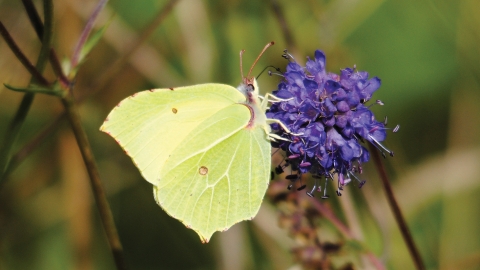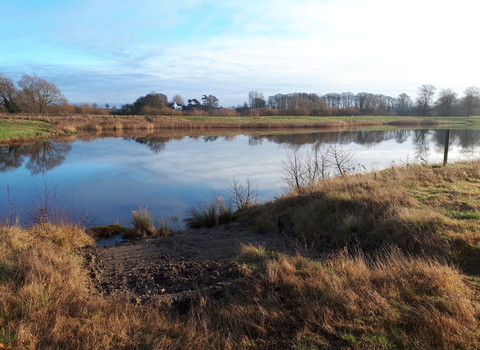

Burton Leonard Lime Quarries
Location
Know before you go
Dogs
When to visit
Opening times
Open at all times. We recommend a 1 hour visit for this reserve, but for a longer outing why not visit nearby Staveley, Ripon City Wetlands or Bishop Monkton Railway Cutting?Best time to visit
May to SeptemberAbout the reserve
As you take in the peaceful air and wonderful views from the hilltop and pause to watch a buzzard or red kite soaring over, it’s hard to imagine that Burton Leonard was a hive of industrial activity from the late 1700s until 1941, when the quarry was closed due to concerns about the kiln fires being visible to enemy planes.
Spring and summer are the best times to visit. There’s rare spring sedge in the magnesian limestone grassland, as well as bee and common spotted orchids, squinancywort, wild thyme, eyebright and fairy flax. In sheltered spots, butterflies such as dingy skipper, brimstone and speckled wood bask in the sun.
Contact us
Environmental designation
About
Burton Leonard Lime Quarries comprises of a mixture of broadleaved woodland, scrub and open glades of magnesian limestone grassland. This special mix of habitats encourages a rich combination of plant species, some of which are locally rare including burnet rose and autumn gentian. Two small populations of the nationally scarce spring sedge are also present in the grassland areas.
The shallow lime-rich soils are nutrient-poor, yet support the most botanically diverse magnesian limestone grassland communities with species including wild thyme, salad burnet, small scabious, rough hawkbit, fairy flax and bird’s-foot trefoil. The screes merit individual recognition due to the differing plant communities they support, including squinancywort, eyebright, betony, field scabious, wild basil, hairy violet, harebell, greater knapweed, clustered bellflower, cowslip and carline thistle. Woodland and calcareous scrub of hawthorn, elder and hazel has developed around the margins of the disused quarries leaving large exposed, sparsely vegetated cliff faces. Ash woodland has developed in several areas below the quarry faces.
The bottoms of the sheltered quarries provide ideal habitats for many butterflies, including green-veined white, meadow brown, ringlet and speckled wood. White-letter hairstreak are also occasionally seen around the elm trees.
Seasonal highlights
- Spring: Plants - Cowslip; Rare spring sedge
- Summer: Plants - Squinacywort; Wild thyme; Eyebright; Fairy flax; Invertebrates - Meadow brown
- Autumn: Plants - Autumn gentian
- Winter: Birds - Red kite
History
The site was an active limestone quarry from the 19th Century through to 1941, with the worked stone being burnt in the lime kilns on the site to produce quick lime. This material had a wide variety of uses from construction to agriculture. The remains of four lime kilns can still be seen on site as evidence of the nature reserve’s industrial past.
Yorkshire Wildlife Trust leases the nature reserve from Mountgarrett Estates, and works to prevent encroachment of trees and shrubs onto the limestone grassland banks.
Directions
Public transport
A bus service (Ripon-Knaresborough-Harrogate) passes through Burton Leonard village.
By car
Approach Burton Leonard village from the A61 Harrogate-Ripon road.

The autumn colours were even more beautiful when the sun came out
Photo Credit - Telling our Story Volunteer, Sara



